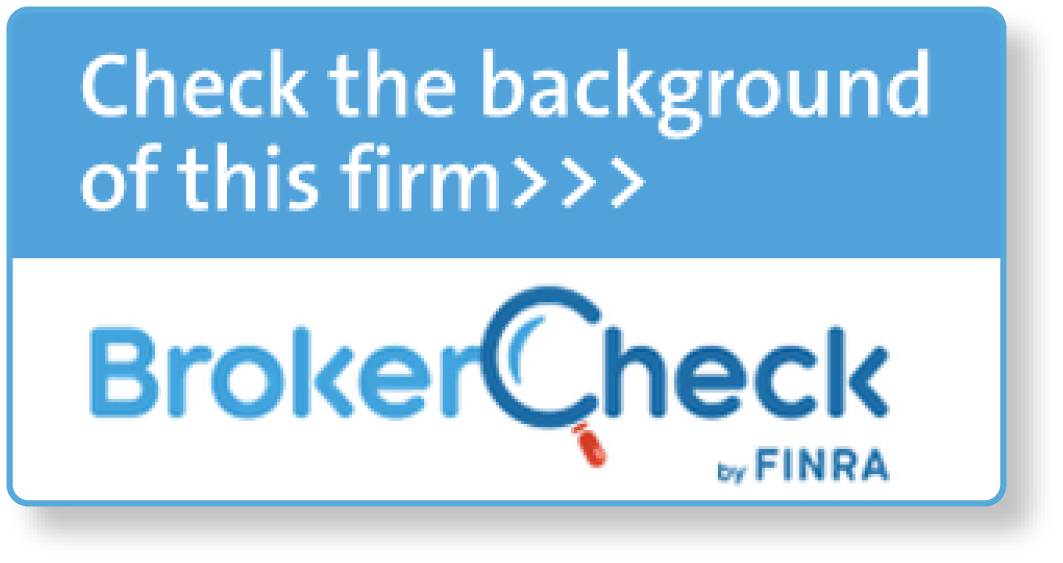OUR TEAM OF PROFESSIONALS WILL PROVIDE OBJECTIVE GUIDANCE
Your Investment Philosophy and Investment Goals
We are happy to discuss your investment philosophy and objectives with you. Once we have established a relationship, you will find that the balance of your investment decisions will be straightforward. We are always available for consultation and to forthrightly answer your questions.
Securities we use on a regular basis include stocks, bonds, mutual funds, institutional funds, Exchange Traded Funds (ETFs), and unit trusts. Our fees for investment advice are competitive. We actively work to provide investment services in the following areas:
- Portfolio design and asset allocation that provide the potential for growth and income
- Retirement plans, including pension, IRA rollovers, or income distribution options
- Stock options
- Systematic investment plans for college education or other goals
- Estate plans and charitable giving
Investment Policy Statement: We work with the client to determine and define goals, objectives, needs, and risk tolerance and then develop the parameters of a portfolio in a written Investment Policy Statement. We review our clients’ portfolios quarterly. In addition, we typically meet or discuss with a client his or her portfolio in detail one or two times per year. Of course, changes and adjustments to holdings can be made at anytime. We make recommendations for changes to portfolios only after careful consideration of market conditions and any changes in a client’s circumstances or goals.
The portfolio management process involves the following steps:
- Identifying and clarifying goals for a given investment portfolio. This includes a discussion regarding income requirements and need for liquidity.
- Determining an investment time horizon.
- Allocation by asset class, including stocks, bonds, cash, and other alternatives.
- Diversification by style, such as growth vs. value or government vs. corporate.
- Selection of individual securities and funds.
- Monitoring portfolio diversification and asset allocation during regularly scheduled review times.
- Rebalancing the portfolio to maintain diversification and asset allocation objectives during regularly scheduled reviews.
- Reporting results to the client.
Client Reporting and Review: Our clients receive comprehensive quarterly reports and an annual summary that tracks unrealized gains and losses; cost basis; interest dividends; and realized capital gains. In many cases we can offer secure Internet access to clients’ investment portfolios and daily values. Additionally, clients integrated with our eMoney wealth management system have 24-hour access to their financial information.
While diversification through an asset allocation strategy is a useful technique that can help to reduce overall portfolio risk and volatility, there is no certainty or assurance that a diversified portfolio will enhance overall return or outperform one that is not diversified.
Re-balancing may be a taxable event. Before you take any specific action be sure to consult with your tax professional.
Asset allocation, which is driven by complex mathematical models, cannot eliminate the risk of fluctuating prices and uncertain returns.
As independent financial professionals, we have the ability to offer our clients quality investments and financial products available in the marketplace.
Brokerage Services
Investments available include:
- Stocks listed on national exchanges
- Bonds listed on national exchanges
- Unit investment trusts
- Open end funds (mutual funds)
- Exchange traded funds (ETFs)
Individual securities are priced at the market or offered at the initial offering price when applicable.
Tax Advantaged Accounts
Popular tax-advantaged and tax-free* investment contracts commonly used in planning include:
- IRA Rollover Contracts–From IRAs or corporate plans
- Roth Conversion IRAs*–Conversion from an IRA or employer-sponsored plan
- Roth IRA*(contributory)–A Roth is generally available to most working Americans subject to income limitations regardless of retirement plans available at one’s place of employment
- SIMPLE IRA–A self-administered Qualified Plan for self-employed and small business people
- Section 403(B) Tax Sheltered Annuity Plans–For public or non-profit employees
- Section 529*–A college savings plan available to all Americans
- Education IRA*–An IRA for college education
- Tax-Deferred Annuities–These can have guaranteed income benefits
- Municipal Bonds and Bond Funds
*Roth IRA, Education IRA and Section 529 Plans offer tax-free accumulation when Federal law and stated provisions are followed.
Distributions from traditional IRAs and employer sponsored retirement plans are taxed as ordinary income and, if taken prior to reaching age 59½, may be subject to an additional 10% IRS tax penalty. Converting from a traditional IRA to a Roth IRA is a taxable event. A Roth IRA offers tax free withdrawals on taxable contributions. To qualify for the tax-free and penalty-free withdrawal of earnings, a Roth IRA must be in place for at least five tax years, and the distribution must take place after age 59½ or due to death, disability, or a first time home purchase (up to a $10,000 lifetime maximum). Depending on state law, Roth IRA distributions may be subject to state taxes.
The guarantee of an annuity is backed by the claims paying ability of the issuing insurance company.





